
Mark George Tobey was an American painter. His densely structured compositions, inspired by Asian calligraphy, resemble Abstract expressionism, although the motives for his compositions differ philosophically from most Abstract Expressionist painters. His work was widely recognized throughout the United States and Europe. Along with Guy Anderson, Kenneth Callahan, Morris Graves, and William Cumming, Tobey was a founder of the Northwest School. Senior in age and experience, he had a strong influence on the others; friend and mentor, Tobey shared their interest in philosophy and Eastern religions. Similar to others of the Northwest School, Tobey was mostly self-taught after early studies at the Art Institute of Chicago. In 1921, Tobey founded the art department at The Cornish School in Seattle, Washington.
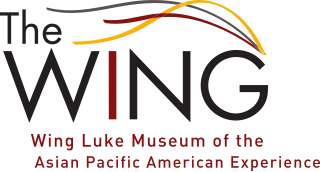
The Wing Luke Museum of the Asian Pacific American Experience is a history museum in Seattle, Washington, United States, which focuses on the culture, art and history of Asian Pacific Americans. It is located in the city's Chinatown-International District. Established in 1967, the museum is a Smithsonian Institution affiliate and the only pan-Asian Pacific American community-based museum in the country. It has relocated twice since its founding, most recently to the East Kong Yick Building in 2008. In February 2013 it was recognized as one of two dozen affiliated areas of the U.S. National Park Service.

Morris Graves was an American painter. He was one of the earliest Modern artists from the Pacific Northwest to achieve national and international acclaim. His style, referred to by some reviewers as Mysticism, used the muted tones of the Northwest environment, Asian aesthetics and philosophy, and a personal iconography of birds, flowers, chalices, and other images to explore the nature of consciousness.

Shigeko Kubota was a Japanese video artist, sculptor and avant-garde performance artist, who mostly lived in New York City. She was one of the first artists to adopt the portable video camera Sony Portapak in 1970. Kubota is known for constructing sculptural installations with a strong DIY aesthetic, which include sculptures with embedded monitors playing her original videos. She was a key member and influence on Fluxus, the international group of avant-garde artists centered on George Maciunas, having been involved with the group since witnessing John Cage perform in Tokyo in 1962 and subsequently moving to New York in 1964. She was closely associated with George Brecht, Jackson Mac Low, John Cage, Joe Jones, Nam June Paik, and Ay-O, other members of Fluxus. Kubota was deemed "Vice Chairman" of the Fluxus Organization by Maciunas.
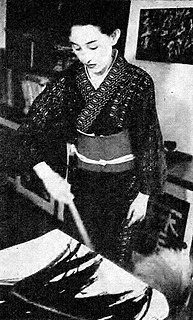
Toko Shinoda was a Japanese artist working with sumi ink paintings and prints. Her art merged traditional calligraphy with modern abstract expressionism. A 1983 interview in Time magazine asserted "her trail-blazing accomplishments are analogous to Picasso's". Shinoda's works have been exhibited at the Hague National Museum, the Art Institute of Chicago, Cincinnati Art Museum, and other leading museums of the world.
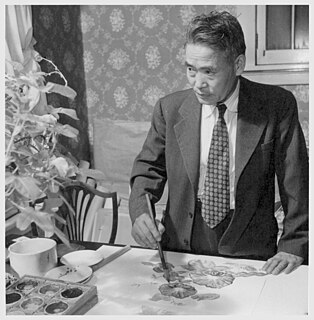
Chiura Obata was a well-known Japanese-American artist and popular art teacher. A self-described "roughneck", Obata went to the United States in 1903, at age 17. After initially working as an illustrator and commercial decorator, he had a successful career as a painter, following a 1927 summer spent in the Sierra Nevada, and was a faculty member in the Art Department at the University of California, Berkeley, from 1932 to 1954, interrupted by World War II, when he spent a year in an internment camp. He nevertheless emerged as a leading figure in the Northern California art scene and as an influential educator, teaching at the University of California, Berkeley, for nearly twenty years and acting as founding director of art school at the Topaz internment camp. After his retirement, he continued to paint and to lead group tours to Japan to see gardens and art.

Ron Chew is an American consultant and community organizer. Chew is a leader in the community based model of museum exhibit development. He lives in Seattle, Washington.
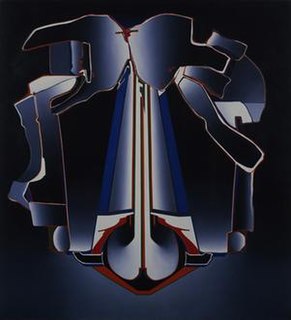
Deborah Remington was an American abstract painter. Her most notable work is characterized as Hard-edge painting abstraction.
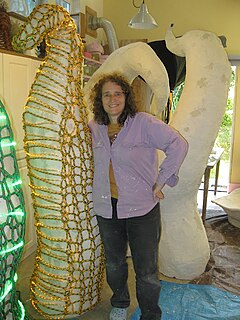
Carol Milne is an internationally recognized Canadian American sculptor living in Seattle, Washington. She is best known for her Knitted Glass work, winning the Silver Award, in the International Exhibition of Glass Kanazawa Japan 2010.
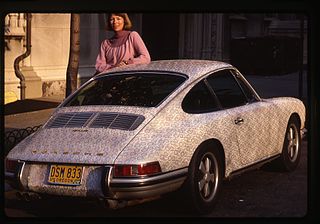
Phyllis Yes is an Oregon-based artist and playwright. Her artistic media range from works on painted canvas to furniture, clothing, and jewelry. She is known for her works that “feminize” objects usually associated with a stereotypically male domain, such as machine guns, hard hats, and hammers. Among her best-known artworks are “Paint Can with Brush,” which appears in Tools as Art, a book about the Hechinger Collection, published in 1996 and her epaulette jewelry, which applies “feminine” lace details to the epaulette, a shoulder adornment that traditionally symbolizes military prowess. In 1984 she produced her controversial and widely noted “Por She,” a silver 1967 Porsche 911-S, whose body she painstakingly painted in highly tactile pink and flesh-toned lace rosettes. She exhibited it at the Bernice Steinbaum Gallery in New York in 1984 and drove it across the United States as a traveling exhibition in 1985. In 2016, she wrote her first play, Good Morning Miss America, which began its first theatrical run at CoHo Theatre in Portland, Oregon in March 2018.
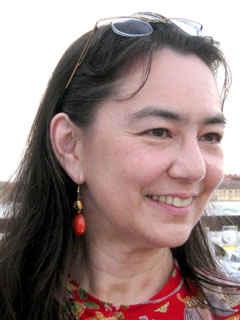
Tamiko Thiel is an American artist, known for her digital art. Her work often explores "the interplay of place, space, the body and cultural identity," and uses augmented reality (AR) as her platform. Thiel is based in Munich, Germany.
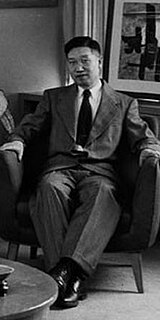
Kenjiro Nomura (1896–1956) was a Japanese American painter. Immigrating to the United States from Japan as a boy, he became a well-known artist in the Pacific Northwest in the 1920s and 30s.

Greater Seattle has had a Chinese American community almost since its founding in 1851. Chinese workers arriving in the 1860s were welcomed, because the Seattle area was sparsely settled and workers were needed; within a few decades, however, newly arrived white settlers resented the Chinese workers, and there were several anti-Chinese riots as the whites attempted to expel the Chinese from the area. Chinese settlement persisted, with the immigrants settling in a well-defined Chinatown where they maintained their culture through family groups, associations, and churches. In the mid-20th century Chinese Americans joined with other immigrant groups to oppose racial discrimination. In 1962 a Chinese American became the first person of Asian ancestry to hold elective office in the state of Washington.

Andrew Chinn (1915–1996) was a Chinese-American artist and art educator, active in the Pacific Northwest from the early 1930s through the 1990s. He is known for his distinctive style of watercolor painting and printmaking, and is associated with the Northwest's Asian-American arts community, the WPA artists of the Great Depression/World War II era, and, peripherally, the Northwest School of painters.
Humaira Abid is a contemporary artist who was born in Pakistan. The main element she works with is wood. Her recent work combines traditional miniature painting with wood sculpture. Her work examines women's roles, relationships, and taboos from a cross-cultural perspective.
Beth Lo in Lafayette, Indiana is an American artist, ceramist and educator. Her parents emigrated from China.
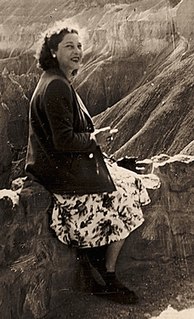
Z. Vanessa Helder was an American watercolor painter who gained national attention in the 1930s and 40s, mainly for her paintings of scenes in Eastern Washington. She painted with a bold, Precisionist style not commonly associated with watercolor, rendering landscapes, industrial scenes, and houses with a Magic Realist touch that gave them a forlorn, isolated quality, somewhat in the manner of Charles Sheeler and Edward Hopper. She spent most of her career in the Pacific Northwest, but was popular in New York art galleries, was a member of the National Association of Women Painters and Sculptors, and, in 1943, was included in a major exhibit at the Museum of Modern Art.

Barbara Earl Thomas is an American visual artist, writer, and arts administrator based in Seattle.
Barbara Noah is a sculptor in glass and concrete, best known for her large installation pieces.
Nancy Genn is an American artist living and working in Berkeley, California known for works in a variety of media, including paintings, bronze sculpture, printmaking, and handmade paper rooted in the Japanese washi paper making tradition. Her work explores geometric abstraction, non-objective form, and calligraphic mark making, and features light, landscape, water, and architecture motifs. She is influenced by her extensive travels, and Asian craft, aesthetics and spiritual traditions.
















